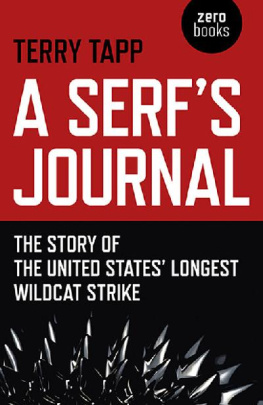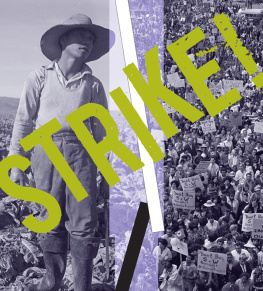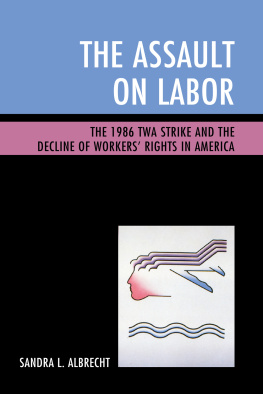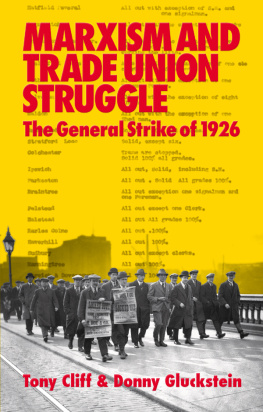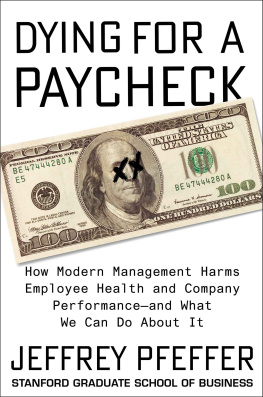WHAT PEOPLE ARE SAYING ABOUT
The Serfs Journal
Felix Guattari once wrote that it is not only species that are becoming extinct but also the words, phrases and gestures of human solidarity. Tapps journal/memoir, an exploration of a single workers strike in the age of surveillance and the police state, helps us work against this disaster perceived by Guattari years ago. A Serfs Journal is a powerful and much-needed overdue call for solidarity today.
Alfie Bown, Hong Kong Review of Books
Working dangerous jobs in an unsafe shipyard, Terry Tapp was up against oppressive company management, a corrupt union in cahoots with the company and the everyday struggle to survive on inadequate pay. But rather than be in competition with one another, he and his co-workers learn to instead cooperate with each other and even win some battles. He tells this story of working people learning to fight back with the soul of a poet and an ability to connect individual struggles with the far larger economic forces that are making life so miserable for so many.
Pete Dolack, author of Its Not Over: Learning From the Socialist Experiment
Every day, millions of people grind their way through miserable work. And every day, a few of them decide the status quo cannot stand they have to fight back. Very few of either of those stories ever get told, particularly by the heroic people who lived them. Terry Tapp does both in a tale of unbelievable miserable, dangerous work and courageous, fed-up workers up against incredibly tall odds. Anyone who has worked a terrible job should read it. Anyone who has dreamed about fighting back should study it.
Micah Uetricht, Jacobin magazine
This is a fascinating narrative of what its like to work as a genuine, authentic worker producing real goods in a physical dimension. Someday this book may be viewed as long-gone nostalgia, but perhaps not! Read And Enjoy
V. Vale, founder of Search & Destroy and RE/Search; researchpubs.com
First published by Zero Books, 2017
Zero Books is an imprint of John Hunt Publishing Ltd., Laurel House, Station Approach, Alresford, Hants, SO24 9JH, UK
www.johnhuntpublishing.com
www.zero-books.net
For distributor details and how to order please visit the Ordering section on our website.
Text copyright: Terry Tapp 2016
ISBN: 978 1 78535 119 8
978 1 78535 120 4 (ebook)
Library of Congress Control Number: 2016931756
All rights reserved. Except for brief quotations in critical articles or reviews, no part of this book may be reproduced in any manner without prior written permission from the publishers.
The rights of Terry Tapp as author have been asserted in accordance with the Copyright, Designs and Patents Act 1988.
A CIP catalogue record for this book is available from the British Library.
Design: Stuart Davies
Printed and bound by CPI Group (UK) Ltd, Croydon, CR0 4YY, UK
We operate a distinctive and ethical publishing philosophy in all areas of our business, from our global network of authors to production and worldwide distribution.
CONTENTS
A Serfs Journal
I worked in a shipyard, one of the largest shipyards in the United States. I was a welder, steel fitter and pipefitter there.
The Ohio River ran along the shipyard to the south. A chain-link fence bordered the northern side and rings of barbed wire ran along the top of that fence. When we came to work in the morning, we entered the shipyard through a gate in the chain-link fence. There was a shed-like building immediately after the gate with three clocks inside. We slid a plastic card with a magnetized strip on the side of any one of the clocks and walked into the shipyard past an armed guard who sat in a white, company pickup truck smoking cigarettes and reading cowboy novels.
The company installed turnstiles on one side of the clock shed, bright metal turnstiles with thick, horizontal bars that met you at eye, chest, crotch and shin level. A union steward told me the company planned to wire the turnstiles to the clocks so the turnstiles would open only when you clocked in at the beginning of shift and when you clocked out at the end of shift. Theyd stay shut the rest of the time and we workers would be trapped inside the shipyard with fencing and barbed wire on one side of us and the river on the other. Like a prison.
One day I looked at that fence, that barbed wire, those turnstiles that locked us in. I was in a prison, but it felt ordinary, typical, even natural, and I thought about why that is.
Im not trying to write philosophy. I am not trying to produce another book to decorate anyones shelves. I am trying to put on a certain perspective, to look at the world in a way that will make more sense than the ways I have been taught to see things or the ways Ive been forced to see things. Its an impression Im following with a pen, the impression that our world is a prison, that our world is The Prison. These pages are glimpses of that impression and these glimpses change as I explore different aspects and moments of what may be my and our captivity. There are no conclusions here, just flashes, sparks, contradictions, anger, maybe some hope.
This book was written while I hid from the foremen in the shipyard. I crouched inside a makeshift, sheet metal box by the train track that runs through the shipyard where I could have been crushed by a pickup or flatbed truck riding by, but I traded that possibility for time to think and write, time to disappear. I was invisible when I wrote this. You had to look closely to catch my eyes flashing back at you from that dark place.
As I wrote this page to you, the train clanked by and spewed a black cloud of diesel exhaust. The toxic cloud came through the metal sheets and I tried to sit very still, to keep my eyes closed, and to hold my breath to avoid gagging. Sitting there I thought of a poem in which a monkey is undergoing medical research. The monkey is strapped to a board and the skin covering its skull is pulled back. There are wires attached to its exposed brain and the monkeys eyes are taped open. The poet wrote, I believe its our right to fly too far into a thought.
I am that monkey with its eyes bulging dry as it confronts the world. The world is that monkey as I pull the skin back from its head and slice into it with my pen. I want to see the world honestly and report that truth to you, and to me, also.
I drove to work at two am. The day shift began at seven am but the superintendent foreman said were behind and ordered us to come in four hours early. The city was digestible at this time, all its detail contained in beams of light in front of my van or beneath a street lamp or a spotlight on the side of a building.
It seemed each light illuminated a piece of a prison.
The porch lights shone on heavy, locked doors on the houses I passed as I left my neighborhood. As I stared down from the interstate, the lights in the parking lots of businesses revealed chain-link fences or razor wire or cameras mounted on awning. The headlights of another vehicle slowly overtook me. It was a cop who drove past me and glared into my window as he slid along the highway.
Some of the pieces of the prison were still in darkness at this time. The military helicopter from Fort Knox flew above the city at this hour, its lights disguised as faint stars, as it scanned our homes for excess heat. My official papers my drivers license and insurance and proof of registration were in my pocket and glove compartment. The magnetic card I needed to swipe to get through the gate at work was in my pocket, too. When I entered the gate, the camera, which was dark, would come to life for a second and hurl a tiny red light as it captured my image.

